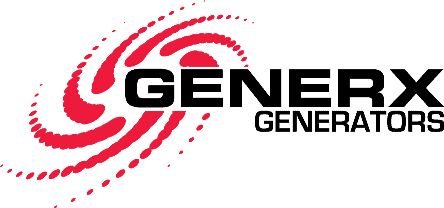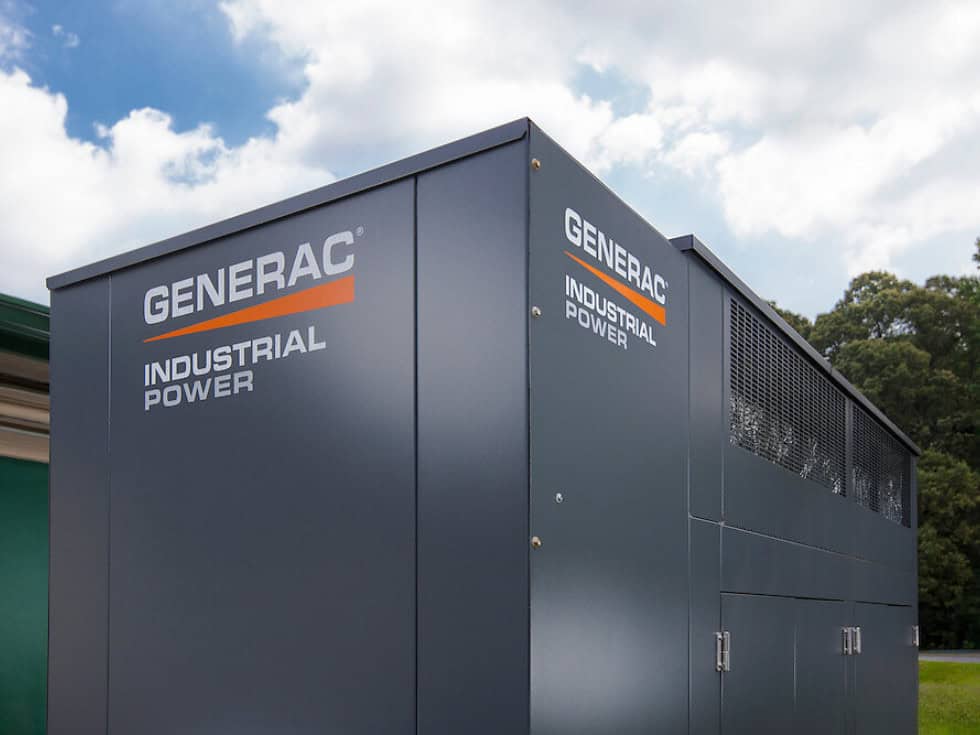Managing an industrial backup generator can be a confusing and difficult task. With a machine as complicated as a generator, it’s understandable to feel overwhelmed and confused when tasked with managing it.
To give you the confidence you need to manage it, we created this guide to help you understand everything you need to know about managing an industrial backup generator.
Common Types of Industrial Backup Generators
Knowing what kind of industrial backup generator your company uses is important. The most common industrial backup generators are:
- Standby Generators: When it comes to industrial facilities, the most common type of generator that’s used is a standby generator. This type gets installed in a specific location and is on standby waiting to be used in an emergency. They tend to be attached directly to the floor.
- Portable Generators: This type of generator can be moved around making it great for industrial operations that require relocating from place to place. They typically are smaller and have wheels on one side.
- Quiet Generators: Quiet generators are specifically designed to be as silent as possible. This type of generator is built with soundproofing materials and made to run at low engine speeds.
Automatic Transfer Switch or Manual Transfer Switch
It’s important to know all the features that come on your industrial backup generator, however you should at least know what kind of transfer switch yours has. A transfer switch is what changes the power source of your industrial facility from the power grid to the generator during an outage, and from the generator to the power grid when the power comes back on. The two types of transfer switch are:
- Automatic Transfer Switch (ATS): Automatically detects if the power grid is out and switches power to the generator, and switches it back when the power is back on.
- Manual Transfer Switch (MTS): Requires you to manually switch the power source in the event of a power outage.
Create a Maintenance Schedule
One of the best ways to ensure your industrial backup generator will perform efficiently and reliably is to keep it maintained. The best way to develop a maintenance plan is as followed:
- Manufacturer Guidelines: Get familiar with the manufacturer’s recommendations for maintenance tasks and intervals. Their guidelines can serve as a foundation for your maintenance schedule.
- Routine Inspections: Make sure to take some time to inspect the generator for signs of wear, leaks, or corrosion. Also, take a look at fuel levels, coolant levels, and the condition of the battery when possible.
- Fluid Checks and Changes: Engine oil, coolant, fuel filters, and other components may need to be flushed out or replaced depending on usage.
- Load Bank Testing: Testing the load bank ensures that it can handle any anticipated load during an outage. This test is also helpful to ensure the engine is operating efficiently.
- Documentation: Keep detailed records of your industrial backup generator. This includes dates, tasks performed, and any issues identified.
Load Management Strategies
Industrial backup generators are capable of handling lots of load, however they still have their limits. Running more load that your industrial backup generator can take will overload it. Inefficiently powering your machines and possibly breaking internal components.
- Prioritize Load: Identify and prioritize the machines and systems that you need running at all times, especially during an outage.
- Load Shedding: Shed non-essential loads during an outage. This ensures that the generator can focus primarily on critical equipment.
Create an Employee Guide
Providing your employees with the knowledge and confidence to effectively operate your industrial backup generator is important. As power outages are unpredictable, it’s important that everyone knows how to properly operate the generator.
- Emergency Procedures: Outline step-by-step procedures for responding to power outages. It should include how to initiate the backup generator, what loads to prioritize, and how to troubleshoot common issues.
- Safety Protocol: Highlight safety protocols in order to avoid possible risks of injury and/or damage. Discuss proper fuel handling, ventilation requirements, and electrical safety practices.
- Communication Channels: Be sure to provide the contact information of key individuals in case further assistance is needed.
- Training Program: If possible, take the time to train employees on how to operate the generator.
In order to make sure that your industrial operations do not get interrupted it’s important to carefully manage your industrial backup generator. With this guide, we hope that you’re able to confidently handle all the tasks you need in order to do that. To learn more about industrial backup generators and how to properly handle them, you can speak to a professional such as GenerX Generators. With GenerX Generators, we are happy to teach you about the features of generators so you can feel confident in your choice, just click here to contact us.
Give your business the benefit of constant power during an outage with GenerX Generators. As a Premier Generac Dealer, we sell, install, service, and maintain Generac Generators, one of the most well-established and trusted brands on the market.
Get a FREE Quote Today or Contact Us Here for any of your generator needs.
Working in and around areas of Florida, here is a full list of our service areas.

